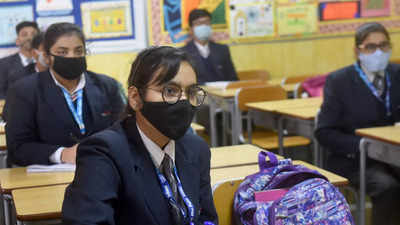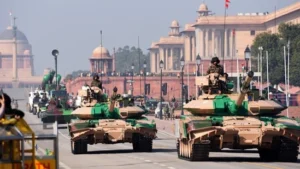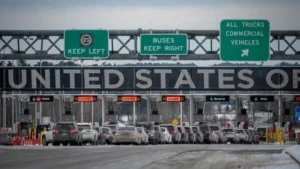Retain Rs 8 lakh EWS cap for admissions, recommends panel

NEW DELHI: The committee set up to evaluate the Rs 8 lakh income limit for the economically weaker section candidates in admissions to educational institutions had recommended retention of the qualifying mark and with the Centre informing the Supreme Court that it accepts the reasoning, the stage might be set for resumption of the counselling process for the NEET-PG seats that have been currently held up.
The Centre on Sunday told the Supreme Court that it would stick to the Rs 8 lakh annual income limit criteria that entitles EWS candidates to a 10% reservation in admissions to educational institutions, including medical colleges, and government jobs, but promised to tweak other EWS- related criteria a bit from next year.
The committee advised implementation of its recommendations from next year, which would mean the EWS quota admissions for medical admissions for the present academic year, which is yet to be completed, would be on the basis of the 2019 criteria. The committee said, “The existing system, which is going on since 2019, if disturbed at the end or fag-end of the process would create more complications than expected both for the beneficiaries as well as for the authorities.”
Answering the court’s questions on justification of the Rs 8 lakh limit, the committee said, “The annual household income distribution of qualified EWS candidates for NEET-UG and JEE (Mains) for 2020 reveals that a mere 9% and 8.2% of EWS candidates were found to be in the income bracket Rs 5-8 lakhs, respectively. In other words, most selected candidates who got the benefit of EWS reservation had annual family income lower than Rs 5 lakh. That is why the committee has come to the conclusion that the existing annual income criteria of Rs 8 lakh is not over-inclusive.”
committee report, which recommended continuance of Rs 8 lakh income limit with riders after a detailed analysis of the criteria. Seeking to respond to the court’s queries, the committee differentiated it from the income criteria adopted to disentitle creamy layer among OBCs for quotas. The committee, comprising former finance secretary Pandey, Prof V K Malhotra of ICSSR and principal economic adviser to the government Sanjeev Sanyal
, was set up on November 30 and submitted its report to the government on December 31 after eight meetings. The committee said that the “EWS may, however exclude, irrespective of income, a person whose family has 5 acres of agricultural land and above (as was included in the 2019 criteria which was challenged in the SC).” The change from the 2019 EWS norms would be exclusion of residential assets criteria which was found to be difficult to collate and verify and a compliance burden. The residential asset criteria had drawn serious objections from the SC on the ground that the value of a residential asset varies substantially between urban and rural areas and even within big cities like Mumbai according to the location of the residential property.
The Centre had set up the committee to revisit 2019 EWS criteria after an SC bench headed by Justices D Y Chandrachud on October 7 remarked, “Economic backwardness is a realistic thing. There is no doubt about it as people don’t have money to purchase books, to even have food. But as far as the EWS is concerned, they are forward class and there is no social or educational backwardness among them. So can you apply the same yardstick of Rs 8 lakh limit for the creamy layer to the EWS? Please remember, with regard to the EWS we are not dealing with social and educational backwardness. What was the basis of fixing the limit or have you simply lifted the criteria for the creamy layer and put it for EWS.” The committee has pointed out that the Rs 8 lakh limit includes all family income, including from agriculture sources making the exercise stricter than in case of OBC quotas.
The committee said, “The current gross annual family income limit for EWS of Rs 8 lakh or less may be retained. In other words only those families whose annual income is upto Rs 8 lakh would be eligible to get the benefit of EWS reservation. The definition of ‘family’ and income would remain the same as those in the office memorandum of January 17, 2019.”
In the case of admissions to educational institutions, sudden adoption of a new criteria inevitably and necessarily would delay the process by several months, which would have an inevitable cascading effect on all future admissions and educational activities/teaching/examination, which are time bound under various statutory/judicial prescriptions, it said. The committee also suggested a three-year loop cycle monitoring of implementation of new criteria suggested by it for effecting required corrections in future.
Examining in detail the issue raised by the SC: whether an annual family income of Rs 8 lakh is too high as a cut-off for identifying the EWS, and whether or not it was mechanically adopting a number because it was also used for the OBC creamy layer, the committee found that though the specific number of Rs 8 lakh appears to be the same as the OBC creamy layer cut-off, the application of the cut-off is very different in EWS and OBC as the two have different contexts.
“The income criterion for the EWS is much more stringent than the one for the OBC creamy layer. First, the EWS’s criteria relates to the financial year prior to the year of application whereas the income criterion for the creamy layer in OBC category is applicable to gross annual income for three consecutive years. Secondly, in case of deciding the OBC creamy layer, income from salaries, agriculture and traditional artisanal professions are excluded from the consideration whereas the Rs 8 lakh criteria for EWS includes that from all sources, including farming. So, despite being the same cut-off number, their composition is different and hence, the two cannot be equated,” it reasoned.
Further, under EWS reservation, the definition of family income includes the incomes of the candidate, his/her parents, his/her under-18 siblings, his/her spouse, and children below the age of 18 years. “This in other words means that income of three generations are included in the family income for EWS purposes. The EWS income criteria also includes agricultural income that does not attract income tax. This must be kept in mind when comparing the EWS income criteria with income tax slabs,” it said.
The Pandey committee report said, “As per current income tax norms, the effective income tax on individuals is zero for those with annual incomes up to Rs 5 lakh. After taking advantage of the various provisions for deductions, savings, insurance etc., the taxpayer may not need to pay any tax up to an annual income of Rs 7-8 lakh. Thus, the EWS cut-off of Rs 8 lakh, if applied to just an individual, is in the ballpark of income tax requirements for zero tax liability. Once applied to include family income and farm income, however, it becomes much more demanding as compared to the individual income tax exemption limit,” it explained.
Agreeing with the SC reservations against residential asset criteria specified in the 2019 norms, the committee said it was of the view that “on merit as well as for ease, convenience, and simplicity, the residential asset area criteria should altogether be omitted as it does not reflect true economic conditions and also poses serious complications and burden on EWS families without commensurate benefits”.
With Thanks Refrence to: https://timesofindia.indiatimes.com/india/retain-rs-8-lakh-ews-cap-for-admissions-recommends-panel/articleshow/88654017.cms







